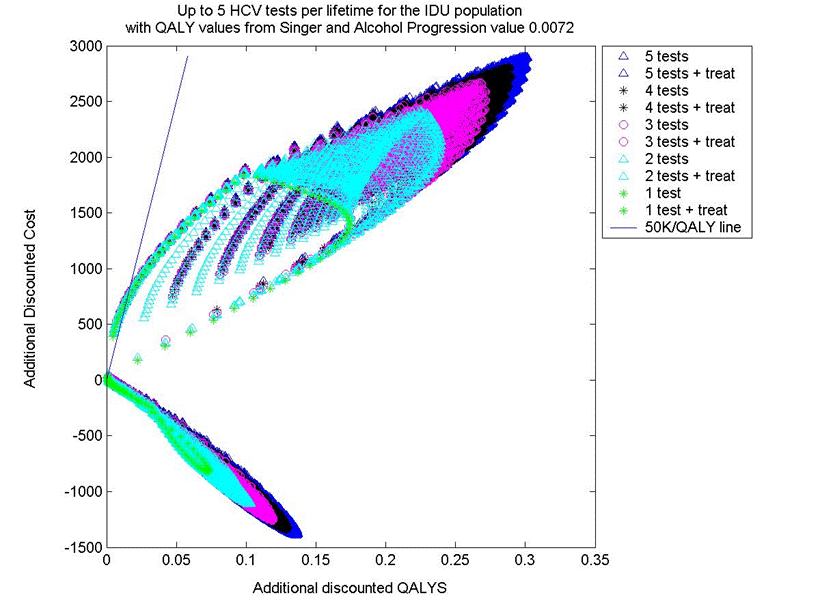|
||||
Monday, October 22, 2007
P2-39
SCREENNG FOR HEPATITIS C: WHEN AND HOW OFTEN
Method: A Markov decision process is formulated where the goal is to determine the best timing for testing when the presence of the disease is not known in advance and behavioral impacts may affect the probability of acquiring and transmitting the virus as well as progression of the disease. The model is studied analytically and using simulation of more than 100,000 policies per group.
Results: Screening the overall population once results in a cost to QALY ratio that is barely better than $50,000/QALY over a wide range of ages but screening multiple times is rarely cost-effective. For Injection Drug Users, screening 3 - 5 times over a lifetime is significantly cheaper than $50,000/QALY; different timing and frequency of tests may be used to achieve equivalent QALYS but some policies have costs 2-4 times as high as the best ones.
Conclusions: Timing and intervals of tests can impact both QALYS and cost and can impact cost-effectiveness. It is appropriate to screen high-risk groups for HCV multiple times over a lifetime.


